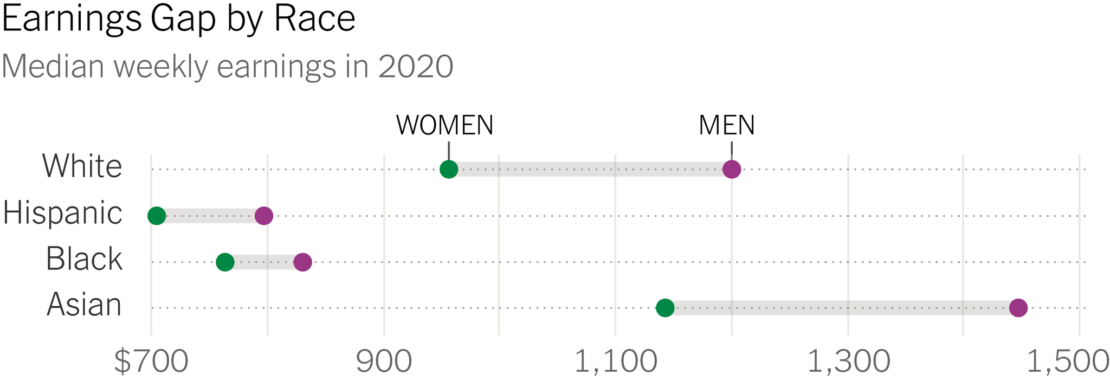
For some time, I’ve been looking for one “source” that curates modern takes on HR Tech, perspectives from the people who build it, and its impact on enterprise — something that’s tailor-made by professionals for decision-makers.
I never found it — so I decided to build it.
Every week, I’ll be sharing fresh insights on tech platforms, design, data, and the future of work — straight to your inbox.
My Thoughts
The pandemic’s biggest tech stocks are getting a market reality check, and investors excited about Zoom and Grubhub are starting to look elsewhere. 📹🍜🤔 With vaccines rolling out quickly, this isn’t surprising. But technologies transforming day-to-day operations are still the ones to watch. The genie is out of the bottle for enterprise tech. ✨ Digital transformation and the switch to cloud accelerated during the pandemic, and and I anticipate a tectonic shift in how companies operate. The “COVID bump” for these companies will continue to be substantial. We have yet to see the growth they will create. 📈🔥
Tech Innovation at Work
Bill Gates’s clean-tech fund Breakthrough Energy Ventures 🌲🔋just recruited two new billionaire investors 💵🔥— CEO of Fidelity Investments Abigail Johnson and Shopify founder Tobias Lütke. Last month, BEV closed a round of $1 billion to invest in as many as 50 startups. Current investors include John Sobrato, a real-estate billionaire; Seth Klarman, CEO of hedge fund Baupost Group; Chris Stolte, founder of Tableau; and Ben Walton, the grandson of Walmart founder Sam Walton. There’s a lot of excitement around this, but many investors still remember the first clean-tech boom as a mixed bag. It’s still early days, and the real impact of Gates’s fund remains to be seen.
In a previous Exit Interview, I mentioned how Clubhouse seems to have arrived at just the right time. 💡🗣️🐣 During widespread lockdown, social media users seem to crave the intimacy of the human voice as well as a welcome video-free alternative to Zoom. Last year, VCs invested $100 million into the company and valued it at $1 billion. But it’s unclear right now how the app plans to make money — it’s yet to charge people to join conversations. 💸🤔 The real question, however, is how the app will handle incendiary content. 🙊 With the number of users spiking and Facebook, Twitter, and YouTube as potential cautionary examples, the platform has a lot of work to do.
Intel is relying more on third-party chip-makers, but it’s not abandoning chip manufacturing. The company recently unveiled plans to build two new fabs at their facilities in Arizona. 🏭📈 This is also a response to what many in the semiconductor industry see as a lack of support from the U.S. government. 👎 The U.S. now accounts for about 12% of global semiconductor-manufacturing capacity, down from 37% in 1990. That said, Intel hasn’t always had the best record in chip production. They’ve had issues with chip design and troubles with customer relationships. 👨💻 Notably, Nvidia overtook Intel as the largest US chip maker last year.

Jeff Hawkins, neuroscientist and tech entrepreneur, has a new book out: A Thousand Brains: A New Theory of Intelligence. 🤔🗯️ In an interview, Hawkins explains his “thousand brains” idea this way: “We have to move to build up a mental model of things, even if it’s only moving our eyes or hands. This is called embodiment. Next, this sensory input gets taken up by tens of thousands of cortical columns, each with a partial picture of the world. They compete and combine via a sort of voting system to build up an overall viewpoint. That’s the thousand brains idea. In an AI system, this could involve a machine controlling different sensors—vision, touch, radar and so on—to get a more complete model of the world.” 🤖💡🏃 It’s a pretty intuitive idea — intelligence in this sense would be anchored in mechanical movements and sensors, not in a central, disembodied brain. We’ll see down the line what this means for AI development.
This headline is pretty self-explanatory: “Zapier Reached A $5 Billion Valuation Without Jumping On The VC ‘Hamster Wheel’.”🙌😎🔥 It seems to have done this by focusing on generating revenue with a customer-centric business model that works. Their customer contracts start free and run up to $599 per month for the full bells and whistles like live support. (Foster says that while teams within large companies now make up about 25% of revenue, most customers pay $19.99 or $49 per month.) This may be something to think about for companies who believe in their product and would like alternatives to a buyout — or simply need a break from the pressure to chase an IPO.
The Changing Workplace
Here’s some wisdom from the “oracle of remote work” and Gitlab’s head of remote Darren Murph. 😎🔮 According to GitLab’s Remote Work Report — nearly 90% of those surveyed believed existing tools and processes for communications work well, and feel that they can have autonomy while working remotely. More and more, people are reconsidering how they balance life and work. 🏡🍷🏂 Murph puts it this way: “I believe that we’ll emerge from this with a healthier outlook on who we are. We are neighbors, sons, daughters, and community members first, and colleagues second. This is not to downplay the significance of our scenario, and I recognize that not all work is amenable to remote. But, as we’ve seen over the past year, a sea change is under way. I believe in us. I believe that we will use this reset for good. I believe that we’ll value our families and communities more through this, and on the other side.”
Nadia Rawlinson was named Slack’s chief people officer in September 2020. 🌟🙌 She had some interesting things to say about supporting employees in industries beyond tech and encouraging a culture that embraces diversity and inclusion. For companies evaluating how to proceed after the pandemic, she encourages investing in culture: “This crisis was a time when companies had to redefine themselves, and culture is the predicate for that. Culture is the bank you’re going to draw credits from when you have to make tough decisions about your workforce, about salary and pay, and about investment or lack thereof.”💼👩💻 As a Black executive, Rawlinson also encourages sharing experiences and allyship: “One thing that was helpful for me was being open about what the experience was like, sharing that authentically and giving that same grace to those around you—really giving people the space and time to process things. If you don’t have the words, acknowledge that, but also acknowledge you want to be there as an ally, as a friend or as a colleague. It goes back to meeting people where they are.” 🔥👏

All About Data
Lockdown has been a time for soul searching and reflection. 🤔🗺️ According to a new Harris Poll, here’s what Americans have learned about themselves:
- 75% of Americans say they learned they prefer socializing in small groups at home over going out. 🍷
- Only 17% say they’ll mostly be going out once all previous social options are available.
- 67% said their lifestyles have gotten healthier while working from home. 🏡🍎
- 55% said they’ve discovered that they didn’t miss the office as much as they thought they would.
- 40% of Americans said they’d miss having extra time in the mornings if they have to go back into an office full-time.
- 39% said they’d miss being at home with their families.
We need to talk about the pay gap. ⚒️💲 The National Women’s Law Center estimates that on average, a woman loses $406,280 to the pay gap in her career. The number can top $1 million for Hispanic women and reaches just short of $1 for Black and Native American women.
The U.S. Bureau of Labor Statistics found that:
- This year, it’s estimated that American women will earn around 82 cents for every dollar that a man earns.
- A decade ago in 2011, it was 77 cents.
- In 1996, the first “official” Equal Pay Day, it was around 74 cents.
That means the gap has shrunk by 8 cents over 25 years. Here’s how the gender pay gap breaks down by race:

Click here to subscribe to Exit Interview, a weekly email about tech platforms, design, data, and the future of work — straight to your inbox.

